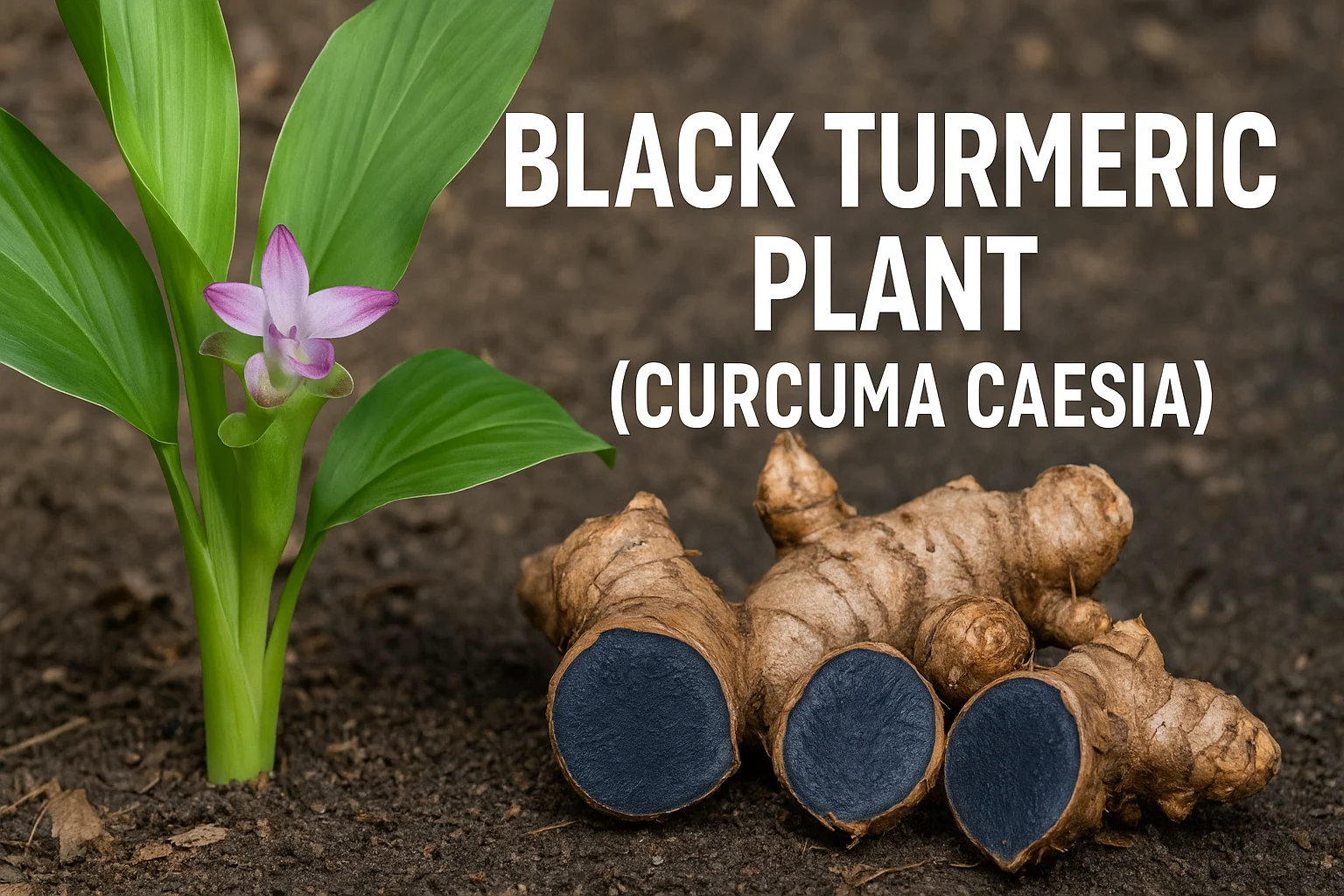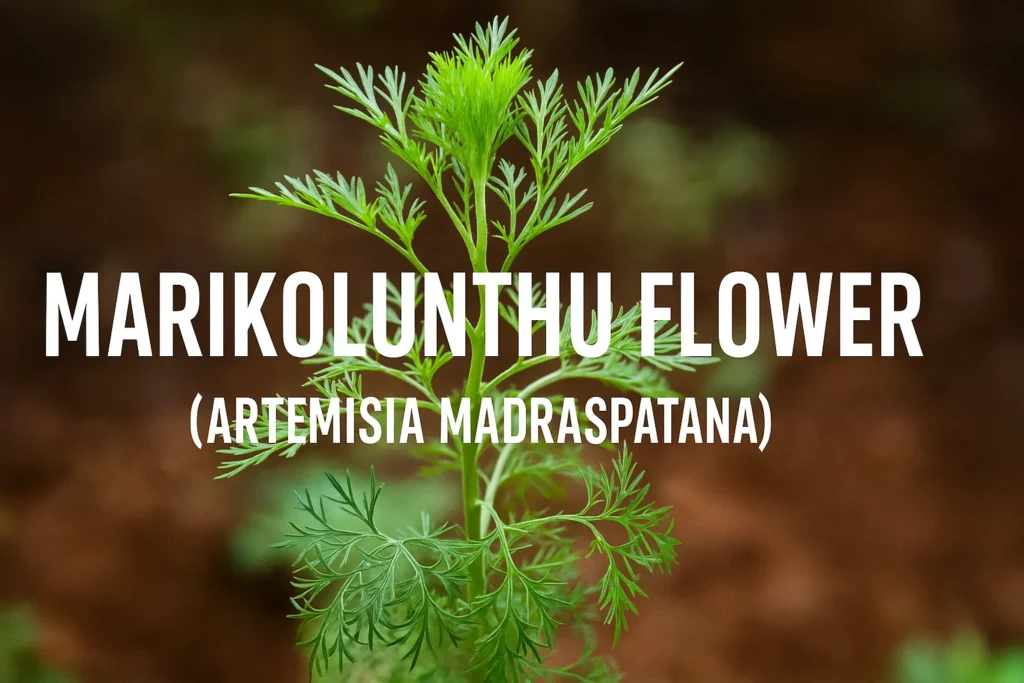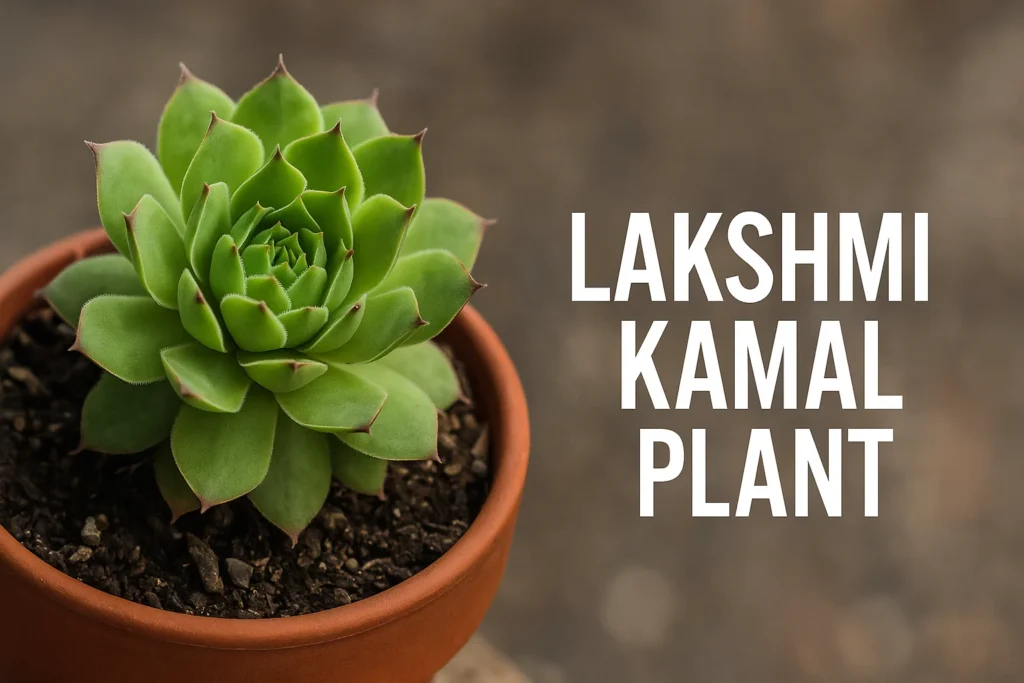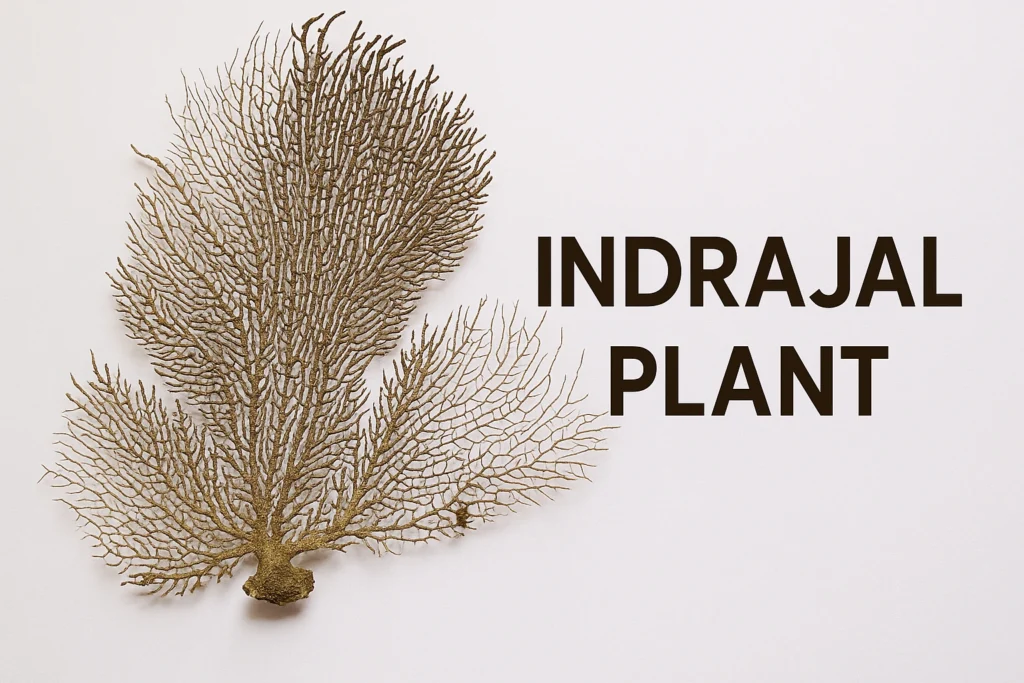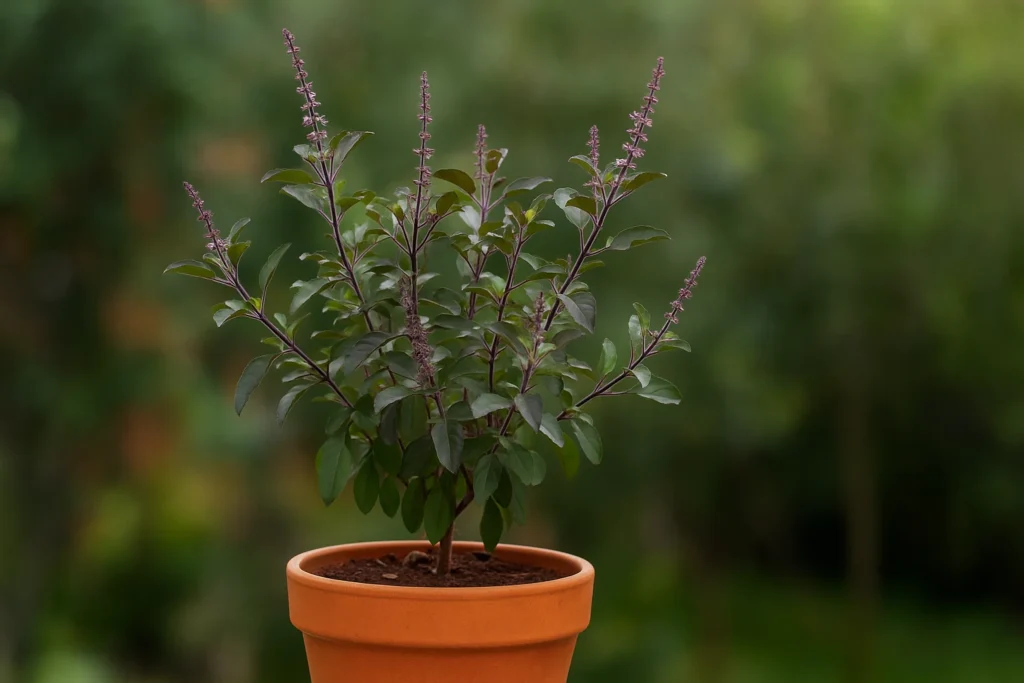When we think of turmeric, the usual golden-yellow variety comes to mind. But did you know there’s a rare cousin of this spice that’s jet black inside? Meet the black turmeric plant, also known as Curcuma caesia or Nar Kachura in some Indian regions.
This plant is not just visually striking; it’s packed with unique properties that have been valued in traditional medicine for centuries. Whether you’re a gardening enthusiast, a herbal remedy lover, or someone curious about rare plants, you’re in for a treat. Let’s explore this fascinating plant together.
What Is the Black Turmeric Plant?
Let’s start with the basics. The black turmeric plant belongs to the same family as regular turmeric and ginger. Scientifically called Curcuma caesia, it’s a perennial herb with bluish-black rhizomes. The outer skin looks like ordinary turmeric, but when you cut it open, you’re greeted with a bold, blackish-blue interior.
Its common name in India is Nar Kachura, and it’s often found growing in the wild regions of Northeast and Central India. Though lesser-known compared to its golden sibling, black turmeric holds a special place in Ayurveda and tribal medicine.
The Unique Beauty of the Curcuma Caesia Flower
Now, let’s talk aesthetics. The Curcuma caesia flower is a sight to behold. It’s usually pinkish or pale lavender with delicate yellow centers. These flowers bloom from a central spike and add a vibrant touch to the green, leafy plant.
If you’re someone who appreciates floral beauty, you’ll enjoy pairing it in your garden with other attractive blooms like the Allamanda Plant or the soft white Coconut Flower. While the flowers are lovely, they’re just a bonus—the real magic lies underground in the rhizomes.
Black Turmeric Plant Benefits You Should Know
Here’s where things get really interesting. The black turmeric plant benefits are wide-ranging. Traditional medicine swears by its anti-inflammatory, analgesic, and antifungal properties. It’s used to treat everything from joint pain and asthma to wounds and digestive issues.
The Curcuma caesia benefits extend beyond human health. In some parts of India, it’s believed to have spiritual powers and is used during rituals and festivals. Farmers even use it to protect crops by planting it at field borders.
These health-supporting features make it a great addition to your herbal garden—especially when combined with other beneficial plants like Marikolunthu or Sampangi, known for their healing and aromatic properties.
Black Turmeric Plant Uses in Daily Life
So, how is it actually used? The black turmeric plant uses range from medicinal to cultural. Some common ways it’s utilized include:
- Making herbal teas for respiratory relief
- Preparing poultices for pain and swelling
- Creating tinctures or oil infusions
- Using powdered rhizomes in skincare remedies
Keep in mind, black turmeric has a more intense flavor and a camphor-like smell compared to regular turmeric, so it’s not typically used for cooking. However, it’s valued as a potent healing agent.
This makes it ideal for DIY natural remedy lovers or anyone exploring herbal alternatives for wellness. For safety, always consult a healthcare professional before internal use.
How to Plant Black Turmeric at Home
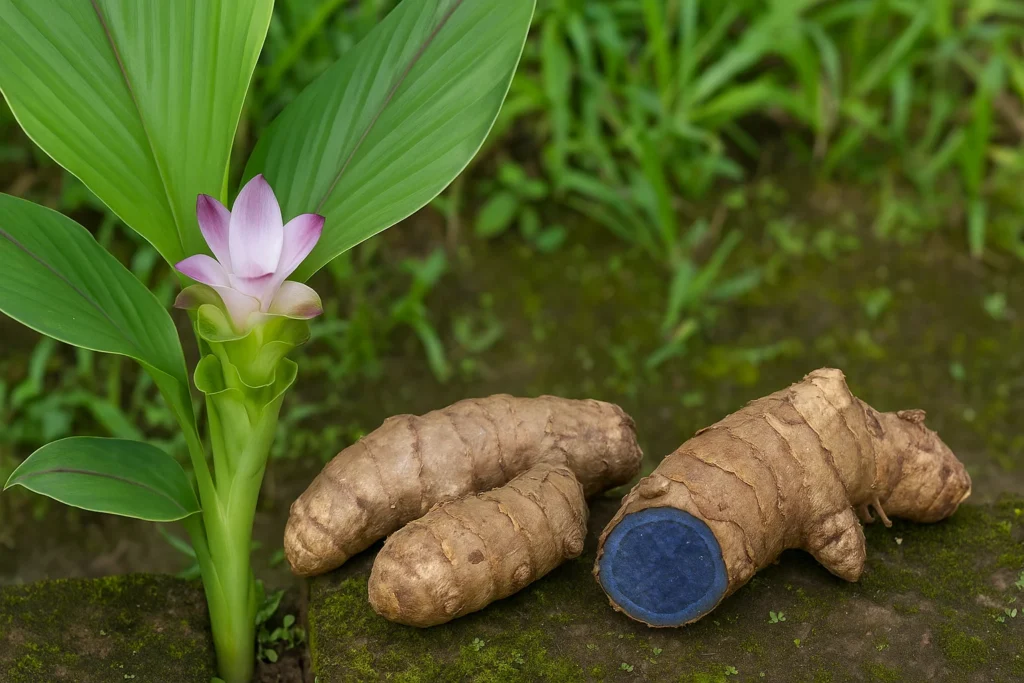
Thinking about growing it yourself? You’re in luck—it’s surprisingly doable. Here’s how to plant black turmeric at home:
- Choose healthy rhizomes: Make sure you start with the original black turmeric plant to ensure potency and growth.
- Pick the right spot: Black turmeric loves warm, humid weather and well-drained soil. A partially shaded area works best.
- Prepare the soil: Enrich it with compost or organic matter to give the plant a nutrient boost.
- Plant the rhizomes: Bury them about 2–3 inches deep with the buds facing up. Water gently.
- Maintain moisture: Regular watering is essential, but don’t overdo it.
- Patience pays off: Harvest the rhizomes after 8–10 months when the leaves start to dry out.
Want to keep your garden safe from birds and pests while giving it a modern edge? Installing an Invisible Grill for balcony around your balcony or open space could be the smart upgrade your garden setup needs.
Curcuma Caesia vs Regular Turmeric: Key Differences
Here’s a quick comparison to help you understand how Curcuma Caesia stands apart from regular turmeric:
| Feature | Curcuma Caesia (Black Turmeric) | Curcuma Longa (Regular Turmeric) |
|---|---|---|
| Rhizome Color | Bluish-black | Bright yellow |
| Aroma | Strong, camphor-like | Mild and earthy |
| Primary Use | Medicinal, spiritual | Culinary, medicinal |
| Flower Color | Pink/purple | Yellow/orange |
| Availability | Rare and regional | Widely cultivated |
Both have their own strengths, but the rarity and medicinal punch of black turmeric gives it a special edge—especially for those into alternative healing.
How to Identify the Original Black Turmeric Plant
Worried about fakes? That’s valid. Many sellers might market dyed or inferior roots as black turmeric. To identify the original black turmeric plant, look for these signs:
- Rhizomes that are dark bluish-black when sliced
- A pungent, camphor-like aroma
- Leaves that are broader and darker than yellow turmeric
- A slightly oily surface on the cut root
Buying from a trusted nursery or supplier is key. It’s worth investing in authenticity when it comes to medicinal plants.
Should You Grow Black Turmeric in Your Garden?
Absolutely, yes—if you have the right conditions. The Curcuma Caesia plant is ideal for tropical and subtropical climates. Even if you live in a colder region, you can grow it in containers and bring it indoors during winter. It’s low-maintenance, attractive, and offers great health value.
Pair it with other therapeutic or fragrant plants like Allamanda Blanchetii or browse our post on Name Things That Gardeners Need to get a full list of must-have tools and accessories for your garden setup.
Final Thoughts
The black turmeric plant is more than just an exotic herb. It’s a blend of beauty, utility, and tradition. From its healing properties and striking flowers to its spiritual and agricultural uses, it deserves a spot in your garden—or at least your radar. With the right care and authentic sourcing, this rare root can bring value, both medicinally and aesthetically. Whether you’re new to gardening or a seasoned green thumb, Curcuma caesia is a plant worth exploring.

